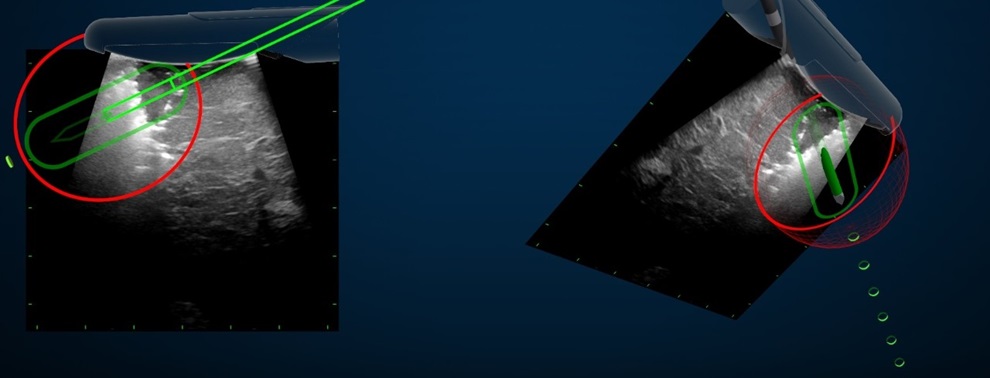Real-Time Navigation Found To Be Useful Tool for Liver Cancer Procedures
Posted on 01 Mar 2024
Liver cancer, ranking as the world's fourth most common cause of cancer-related deaths, presents a significant health challenge. For certain patients, ablation offers a less invasive alternative to traditional surgical tumor removal. This technique employs concentrated energy to destroy tumor cells, similar to how microwaves heat food. Nonetheless, surgeons face a technical challenge in accurately pinpointing the tumor and optimally positioning the ablation device. This precision is crucial for effectively destroy the tumor while preserving the surrounding healthy tissue. Traditionally, surgeons have relied on two-dimensional ultrasound guidance, but the complexity of operating in three dimensions presents a hurdle. Visualizing all three dimensions on a video monitor is a challenge in laparoscopic or minimally invasive surgery. New technology enhances this process by providing three-dimensional navigation as a supplement to static ultrasound imaging. This system utilizes an electromagnetic field generator and spatial sensors to create a real-time augmented reality image, offering surgeons more precise information about the tumor's location.
Now, a study by researchers at the University of Cincinnati Cancer Center (Cincinnati, OH, USA) has highlighted the effectiveness of real-time navigation in assisting surgeons during liver cancer ablation procedures. The retrospective study examined over 750 ablation procedures, performed by a single experienced surgeon, with and without the aid of navigation, from June 2011 to January 2021. The results revealed no significant differences in survival rates or instances of incomplete ablations — where tumors weren’t fully destroyed — between procedures performed with and without navigation.

Interestingly, the navigation-assisted group included a higher number of patients with advanced disease and tumors located in anatomically challenging positions. These findings suggest that real-time navigation is a valuable tool for surgeons conducting ablations on liver cancer tumors. However, the advantages may not be as evident for surgeons with extensive experience in high-volume procedures. The researchers emphasize that technological innovations play a crucial role in encouraging wider adoption of new treatments and procedures like ablation among surgeons.
“Incorporating ablation into clinical practice is still very new, and most surgeons will have little to no experience with intraoperative targeting,” said David A. Gerber, MD, who led the study. “This clinical experience is one of the largest in North America, so it is likely that navigation will have a greater impact for the less experienced surgeon.”
Related Links:
University of Cincinnati Cancer Center














